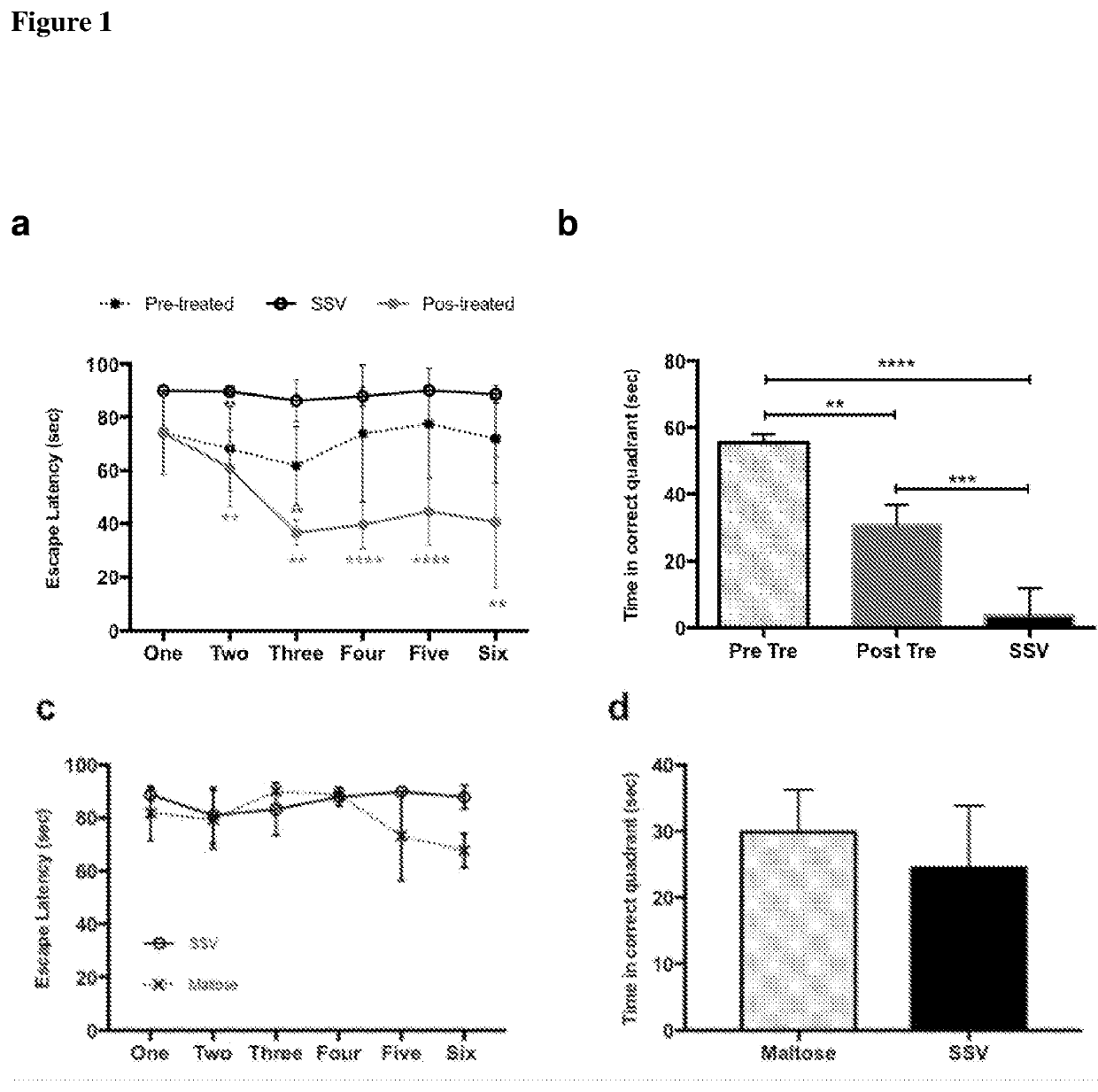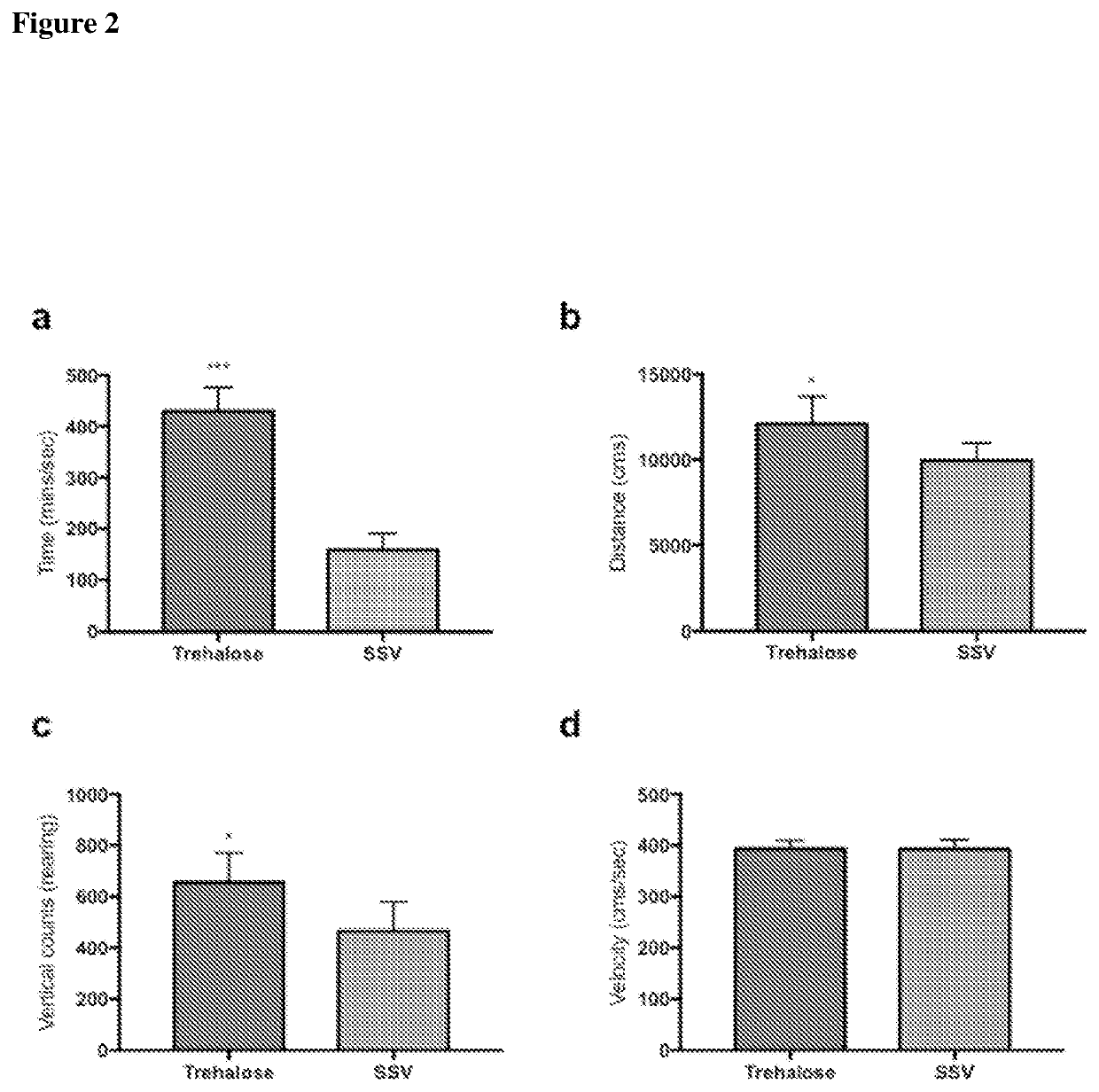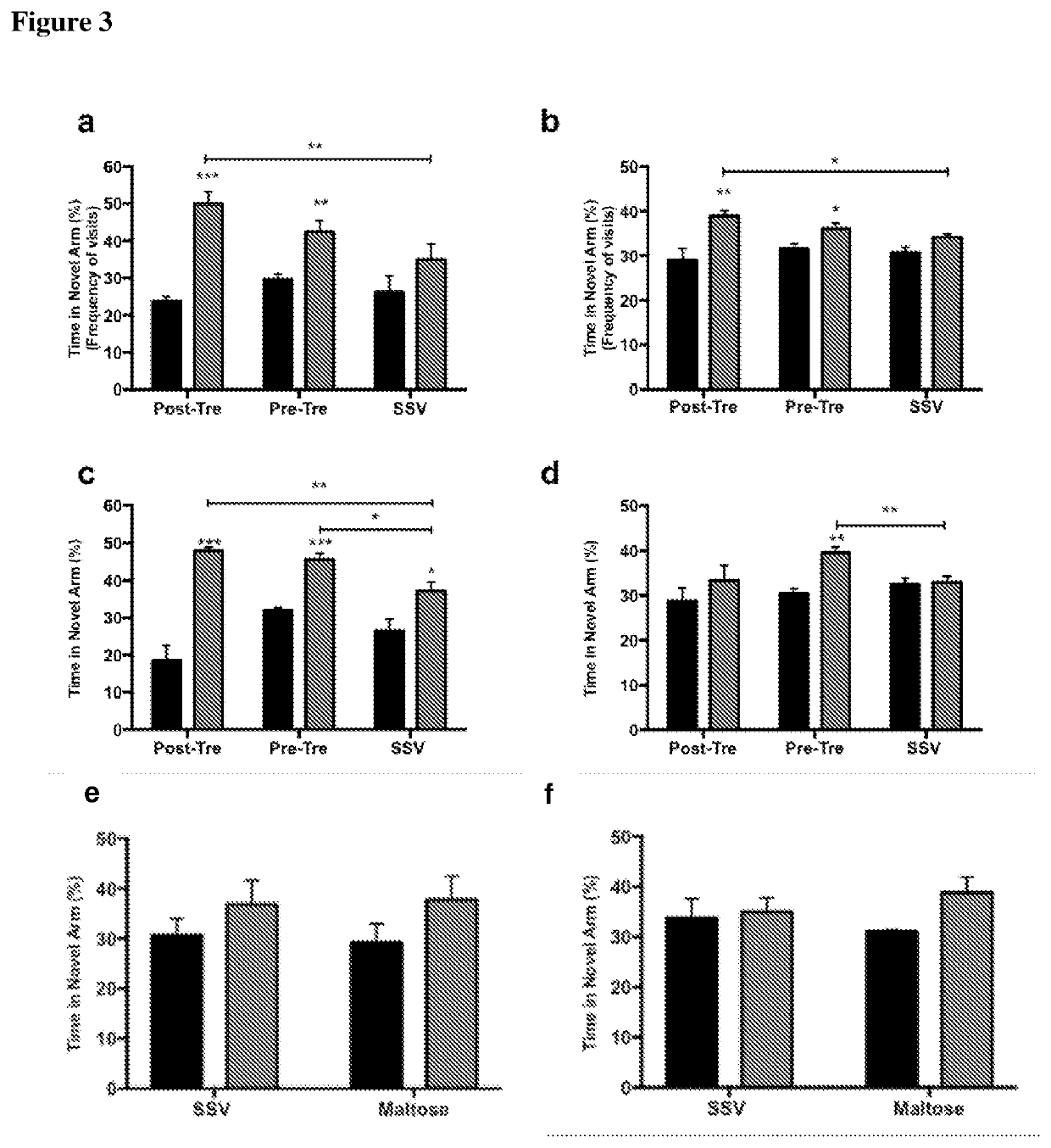Prophylaxis and treatment of cognitive dysfunction and decline
a cognitive dysfunction and treatment technology, applied in the field of cognitive dysfunction and cognitive decline treatment, can solve the problems of significant public health burden, long-term cognitive deficit in affected individuals, morbidity and disability, etc., and achieve the effect of improving functional outcomes
- Summary
- Abstract
- Description
- Claims
- Application Information
AI Technical Summary
Benefits of technology
Problems solved by technology
Method used
Image
Examples
example 1
Restores Water Maze Performance Following Traumatic Brain Injury
[0073]A significant overall improvement in escape latency was observed in the Morris water maze (MWM) test for trehalose treated mice when compared to control treatment group post TBI. Trehalose treated mice (n=5) demonstrated an overall increased acquisition of the task (ANOVA, p<0.0001) as compared with SSV—treated control group (n=8) (FIG. 1a). Additionally, the probe day twenty-four-hour retention task revealed a significant improvement in memory in trehalose treated animals (P=0.0159) (FIG. 1b). The second TBI control group consisting of the dissacharide maltose control group (n=7) revealed no significant differences in escape latency between the maltose treated group and SSV treated (n=13) (FIG. 1c) or the probe day 24-hour task retention (FIG. 1d).
[0074]To determine whether trehalose administration may prevent traumatic brain injury-related decline in cortical function and behaviours, the inventors treated a grou...
example 2
Increases Spontaneous Activity in the Open Field Assessment
[0075]Open field behavioural assessment indicated a significant increase in exploration activity for the trehalose treated group compared to control group in ambulatory time (P<0.001) (FIG. 2a), total ambulatory distance (P<0.01) (FIG. 2b) and vertical counts (P<0.01) (FIG. 2c). Importantly, there was no significant difference in ambulatory velocity between the two groups (FIG. 2d). The secondary control group treated with maltose was not tested in the open field assessment.
[0076]In the open field test, there was a significant increase in locomotion and exploration in the trehalose treated group when compared to controls after TBI. The open field test is an accepted paradigm for measuring anxiety and depression in rodents, whereby an increase in locomotion and exploration are believed to be representative of a lower level of anxiety and depression. Additionally, the observed enhanced activity in the open field environment wa...
example 3
Enhances Cognitive Performance of TBI Mice in the y-Maze
[0077]In the y-maze, the mice treated with trehalose post-TBI showed an overall significant improvement in both the duration and frequency of visits into the novel arm, indicating a willingness to explore a new environment. One-minute frequency was significantly enhanced over the SSV group (p<0.001) (FIG. 3a) as was the five-minute frequency (p<0.01) (FIG. 3b). Additionally, trehalose treated mice had a significant overall duration of time in the novel arm at the one-minute time point (p<0.001) (FIG. 3c). In the subsequent control study, the maltose control group was unremarkable compared to the SSV group yielding no significant improvement in one (FIG. 3e) or five (FIG. 3f) minute frequency or one-minute (data not shown) duration time points.
[0078]In a y-maze, both pre-treated trehalose mice also performed significantly better than SSV-treated littermates in the one (FIG. 3a) and five (FIG. 3b) minute frequency and one minute ...
PUM
 Login to View More
Login to View More Abstract
Description
Claims
Application Information
 Login to View More
Login to View More - R&D
- Intellectual Property
- Life Sciences
- Materials
- Tech Scout
- Unparalleled Data Quality
- Higher Quality Content
- 60% Fewer Hallucinations
Browse by: Latest US Patents, China's latest patents, Technical Efficacy Thesaurus, Application Domain, Technology Topic, Popular Technical Reports.
© 2025 PatSnap. All rights reserved.Legal|Privacy policy|Modern Slavery Act Transparency Statement|Sitemap|About US| Contact US: help@patsnap.com



